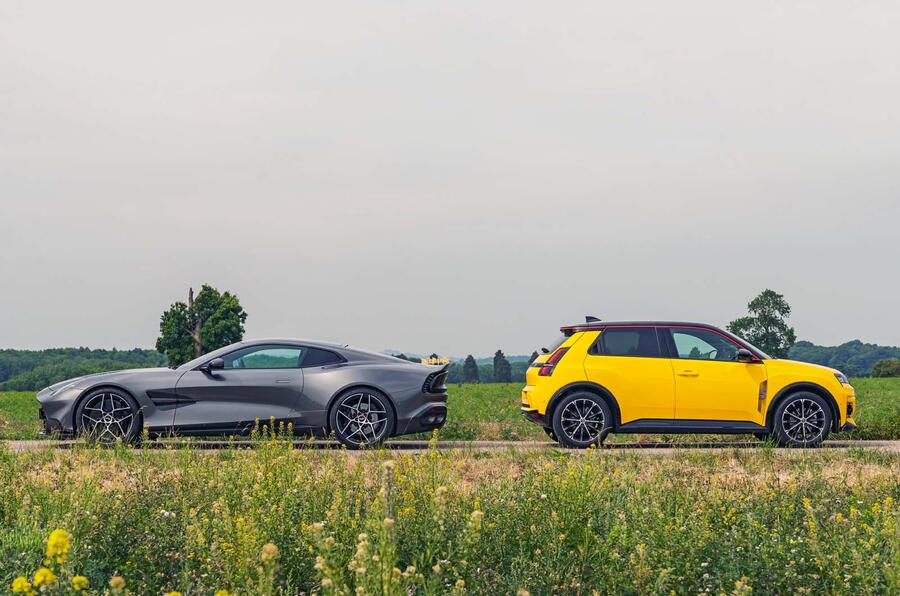LA: Today, the level of design that you find in both premium and popular cars is nearly equal. It used to be that if you made a B-segment hatchback you’d see compromises everywhere. But look at the Renault 5: it’s parked next to an Aston Martin Vanquish and you can still appreciate it. Obviously we don’t have the power, but on a design level every aspect is treated with as much love.
AC: As a designer, do you learn from other cars on the road, regardless of class?
LA: For us, Aston Martin is a benchmark in design: it’s the whole brand experience. We’re learning a lot from Aston in how they position the car, how they advertise, how they use branding.
MR: You asked if we get inspiration from other cars: it’s everything, whether it’s fashion, product design, architecture, furniture – you’re constantly looking and absorbing. I spend my time saying ‘I knew you could do that’. If someone has told me you can’t do something and then I see someone else has done it, I will be such a pain in the ass.
AC: Do you recognise the work of other designers when you look at a new car?
LA: I hope so. You want a signature. You want it to be on-brand, and you want to see the imprint of the designer. There needs to be a ‘before’ and ‘after’ [a specific designer]. Obviously a car needs to reflect brand values, but you’re not going to design something you dislike, so you have a personal expression.
MR: With that personal expression we’re also defining the brand’s DNA as it changes over time. Like with your children, it’s a chain of DNA but they’re all different. So our role is to evolve that DNA through time and technology. As Laurens says, hopefully you see it. To me, Renault, Alpine and Dacia now feel more – and I can’t express the word in any other way – designed. They are more considered, there are more consequent things in those products than before.







